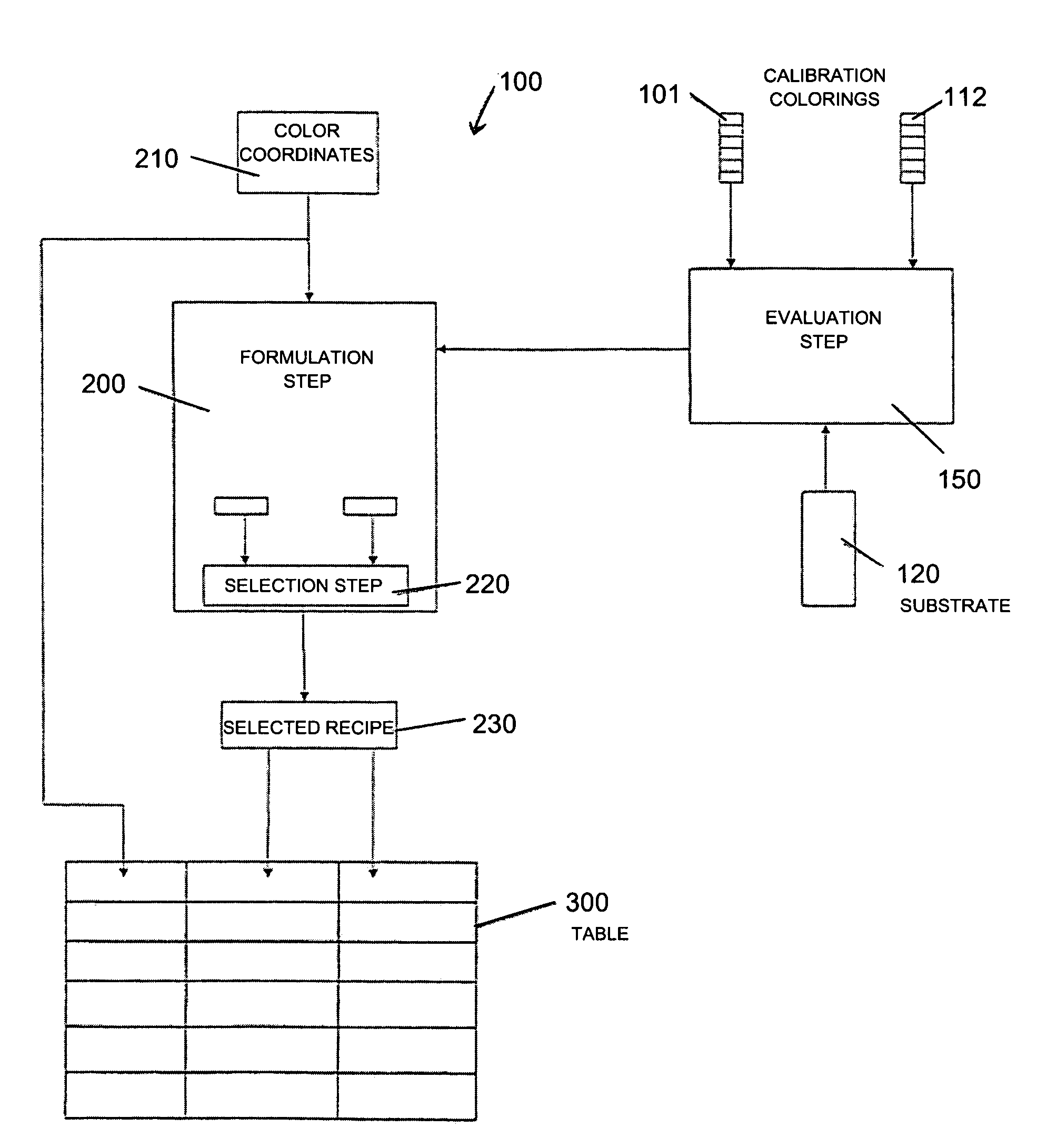Process for the production of a color palette
a color palette and process technology, applied in the field of system and method for producing a color palette, can solve the problems of increasing the time spent, increasing the cost and cumbersomeness of the production process, and not always being able to create such an extensive group of physical color books
- Summary
- Abstract
- Description
- Claims
- Application Information
AI Technical Summary
Benefits of technology
Problems solved by technology
Method used
Image
Examples
Embodiment Construction
[0034]Principally, any mathematically defined color space is suitable for use with the method and system in accordance with the present disclosure. However, for reasons of simplicity, the generally used CIE-Lab-color space is used herein as an example to illustrate the features and novelty of the method and system in accordance with the present disclosure.
[0035]It is known that only a partial space of the CIE-Lab-color space is realizable depending on the coloring process (printing process, etc.) for a given substrate. The theoretically possible points in the Lab-color space are difficult to determine and the surface of the Lab-body has a relatively complex shape. Thus, the following procedure is used to obtain the realizable color space.
[0036]The value range for the L-coordinate in the CIE-Lab-color space extends from 0-100. Typically, 10-20 values (which may be equidistant values) are selected for the L-coordinate within this value range and one continues with the smallest of thes...
PUM
 Login to View More
Login to View More Abstract
Description
Claims
Application Information
 Login to View More
Login to View More - R&D
- Intellectual Property
- Life Sciences
- Materials
- Tech Scout
- Unparalleled Data Quality
- Higher Quality Content
- 60% Fewer Hallucinations
Browse by: Latest US Patents, China's latest patents, Technical Efficacy Thesaurus, Application Domain, Technology Topic, Popular Technical Reports.
© 2025 PatSnap. All rights reserved.Legal|Privacy policy|Modern Slavery Act Transparency Statement|Sitemap|About US| Contact US: help@patsnap.com



